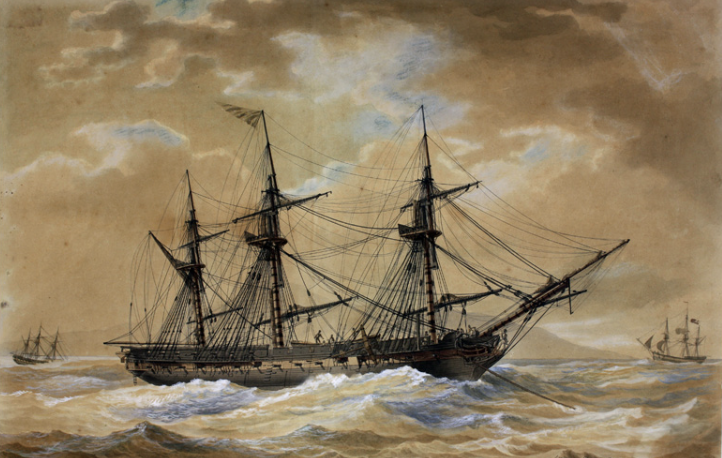Storms like Hurricane Sandy, which recently roared across the Northeast, are nothing new to the eastern seaboard. One of the more destructive storms to hit New England churned its way here in September 1815. The term “hurricane” had not yet entered the American lexicon, and people dubbed this storm “The Great September Gale.” It was a powerful storm, by all accounts — the equivalent of a Category 3 storm with sustained winds of 135 mph. It made landfall near Center Moriches, Long Island, crossed Long Island Sound, and slammed into Connecticut.
As is often the case, the tidal surge associated with the storm did the greatest damage. According to a report from the Newburyport Herald, Providence, Rhode Island bore the brunt of the surge. “[U]pwards of one hundred houses, stores, &c. were destroyed in the gale; … the tide rose upward of 14 feet;…nearly all the vessels in port were either dismasted, sunk, or driven beyond the bridge, which was also destroyed.”1

Early reports listed at least 53 vessels in Boston Harbor either sunk or extensively damaged, mainly by coming into contact with the wharves where they were moored. Constitution had returned to Boston in May after its victory over HMS Cyane and HMS Levant. The ship’s crew was “paid off” in June and the ship was laid up in ordinary (put in mothballs, we might say now). The ship was securely moored off the Navy Yard when the gale struck, and played a role in saving one vessel. The brig Washington, at anchor in the middle of the harbor, dragged its anchors and rammed a ship lying at the end of Union Wharf. This vessel in turn struck the ship Pactolus, which then bore down toward the mudflats off the Navy Yard. Pactolus’ quick-thinking crew let go an anchor which fortuitously dragged over Constitution’s stout cable, thereby keeping the merchant ship from being dashed onto the shore.3 Constitution did not suffer any damage at all.
1 Newburyport Herald (Newburyport, Massachusetts), September 26, 1815.
The Author(s)
Matthew Brenckle
Research Historian, USS Constitution Museum
Matthew Brenckle was the Research Historian at the USS Constitution Museum from 2006 to 2016.